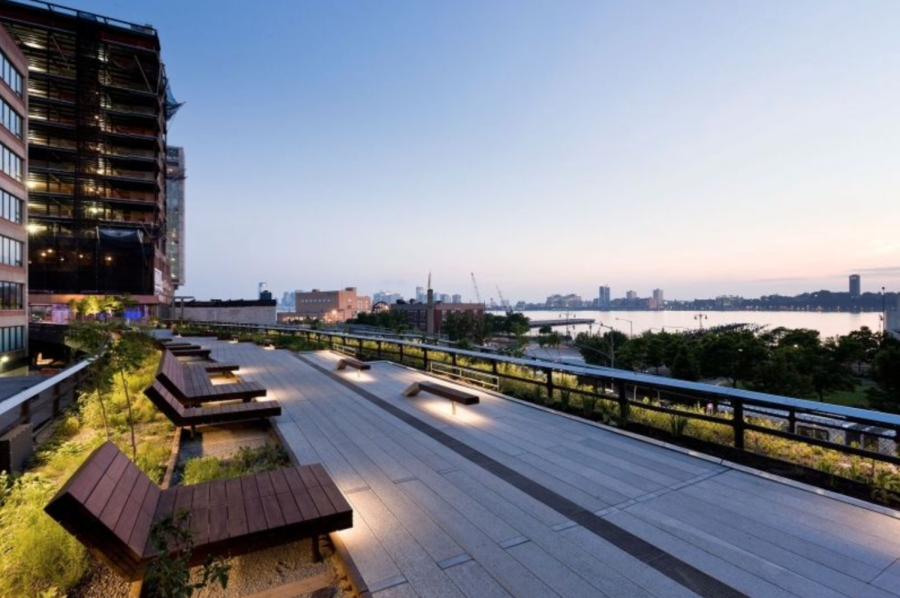Rise Above NYC on the High Line
When you are in NYC, do you ever wish you could avoid the annoying crowds of people bumping into you on the sidewalks and the never-ending traffic whizzing by you on the streets? Well, you may be able to rise above it if you walk along NYC’s West Side on the High Line. The High Line is a public park and walkway that was built along abandoned elevated railroad tracks. The park has many diversified gardens and things to do and see along the way. If you feel like stepping off the path, there are many attractions you can enjoy that are just off the High Line.
The High Line has a very interesting history. During the 1800s there were railroad tracks that ran along 10th and 11th Avenues transporting coal, dairy products, and beef through the West Side of Manhattan. It was an extremely crowded area, and the pedestrians were in danger of being run over by the trains. Riders on horseback waved red flags to warn that trains were approaching, but it was still very dangerous. By 1910, 548 deaths occurred on 11th Avenue alone. It was decided that the tracks should be elevated for safety purposes. The first elevated train in this area was in operation in 1933. It was known as the “West Side Elevated Line.” However, by the 1950’s, trucks were delivering more and more goods. After a while, freight trains were not being used as much. In 1980, the West Side Line shut down. It was actually scheduled to be demolished but people in the community joined together for it to be saved from demolition and converted into a public park for everyone to enjoy. In 2006, work began on turning the unused elevated line into a public urban park. In 2014 the whole project was completed and it opened to the public. This project served as an example to other cities to transform unused industrial areas into green urban spaces that their citizens could enjoy.
There are many things to see and do along the 1.45-mile-long High Line. As you walk along the 30-foot elevated path, you will weave between buildings and see spectacular views of Midtown Manhattan and the Hudson River. You will see many beautiful gardens along the way that change with the seasons. The High Line’s landscape design is inspired by the native plants and grasses that had grown wild on the abandoned track. There are different garden zones such as woodlands and grasslands. There are also wetlands that surround a popular stopping place with a sundeck and water feature. As you walk along the path, you will also see various art exhibits. Near the Hudson Yards development at the northern end you will find the Plinth, which is a fairly new open area where large sculptures are displayed. You will also find food and gift vendors along the way and sometimes performing musicians, dancers, and actors.
If you feel like stepping off the High Line, there are many nearby attractions that are worth visiting. One of the most popular attractions near the High Line is Hudson Yards which is a large, high-end commercial real estate development containing many shops and restaurants. One attraction at Hudson Yards is a huge honeycomb-style structure called The Vessel. As you climb it’s structure you can get a great view of the city and the Hudson River in the distance. Another attraction at Hudson Yards is Edge which is an observation deck where you are completely surrounded by glass, giving you the feeling that you are standing on the edge of Manhattan. Just east of the High Line on 9th Avenue is Chelsea Market where you have a huge selection of foods. There are over 35 vendors including restaurants, grocers, clothing stores, and book shops. The Chelsea Market is over a block long and it used to be the home of the Nabisco factory. At the south end of the High Line is the Whitney Museum of American Art which has one of the largest collections of American art from the 20th and 21st century.
The next time you visit NYC, you should consider going to the West Side and taking a walk on the High Line. Although it does get crowded sometimes, you can still enjoy nature, works of art, and some good food from vendors. Other cities should be inspired by this unique use of unused space.
This is Andrew's first year as a staff writer for Prospect.






